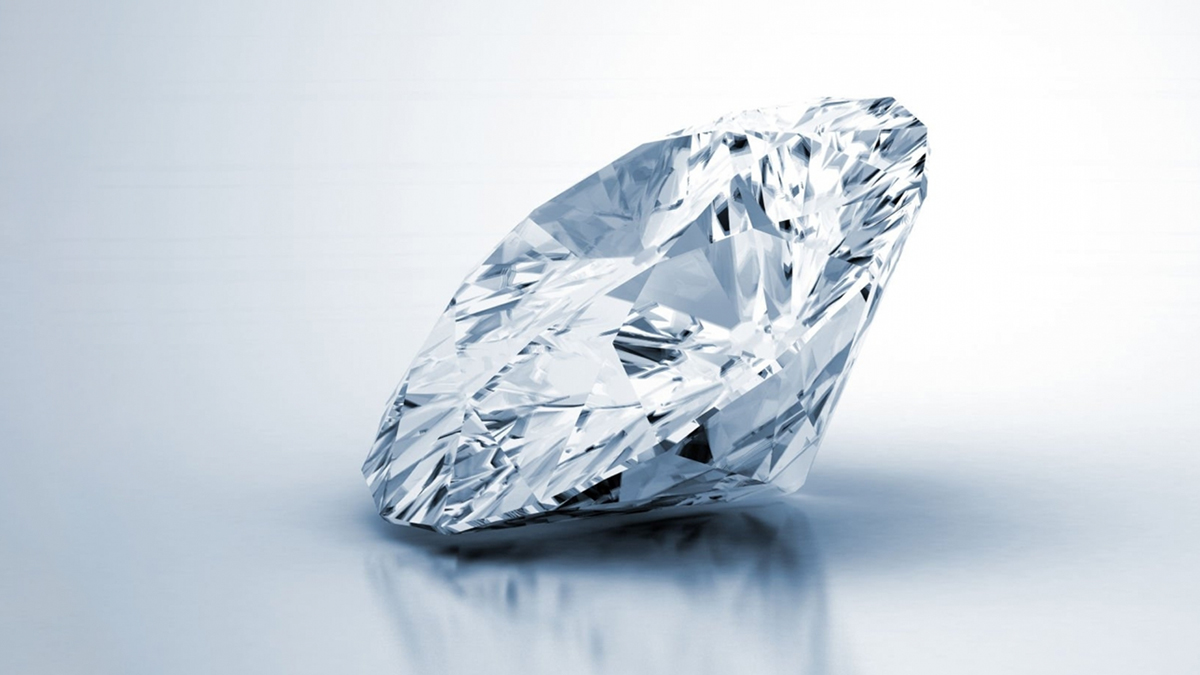The origin of word ‘diamond’ comes from ancient Greece where they refer to them as ‘adamas’ which means invincible. Diamonds are the symbol of love, luxury, wealth, strength and beauty.
The mining of natural diamond can have a significant negative impact on the environment, including pollution and habitat destruction. It is believed that diamonds were formed millions of years ago. They are located 150km-200km deep below the earth's crust in the melted rock of the mantle.
Lab-created diamonds have recently emerged. Instead of being mined from the earth, they are grown in laboratories.
The production of lab-grown diamonds has become more sustainable and eco-friendly. And many customers are seeking out alternative options like man-made diamonds or lab created diamond. This article will explore lab-grown diamonds. We'll look at how they are made and the advantages of choosing them over natural diamonds.
Are Lab Created Diamonds Real?
A lab-created diamond is genuine. It is made from pure carbon, giving it the same physical and chemical properties as a mined diamond.
Even the untrained eye can detect fake diamonds. Synthetic or man-made materials such as cubic zirconia, synthetic moissanite, and glass 'diamonds' can be used to create jewelry. Natural minerals such as zircon, white sapphire, and spinel can also be used. These are typically softer and more easily scratchable.
The FTC recently altered the definition of a diamond by removing the word "natural" to include lab grown diamonds. "Lab created diamonds are not fake." These aren't cubic zirconia's. They possess all of the physical and chemical qualities of a mined diamond."
According to Stephen Morisseau, a representative for the Gemological Institute of America - GIA.
Labs such as GIA, HRD, and IGI are now grading diamond production in the same way as mined diamonds. This creates a level playing field for all diamond producers.
How Are Lab Grown Diamonds Made?
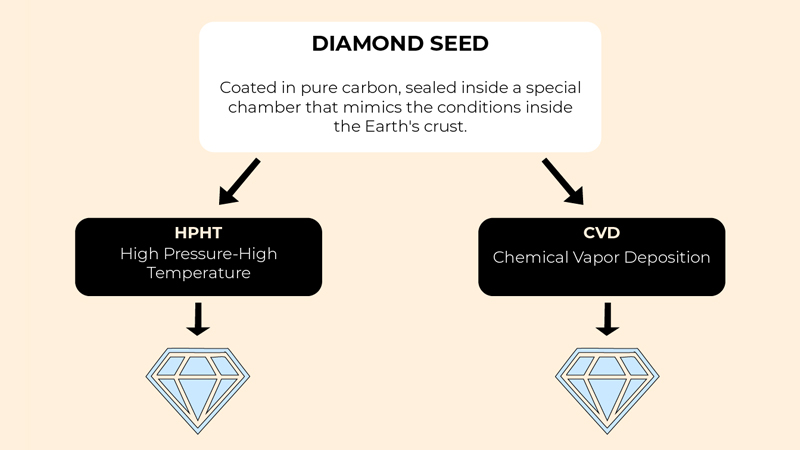
Lab grown diamonds are physically, optical and chemically optical identical to natural mined diamonds. In many ways the production of lab grown diamond is more sustainable than earth mined diamond. Lab grown diamonds are also known as man-made diamonds, lab created diamonds or synthetic diamonds.
There are two main processes of making a lab grown diamond. These are called Chemical Vapor Deposition (CVD) and High-Pressure High Temperature (HPHT).
The two methods of creating diamonds are both effective. The diamonds produced have the same chemical composition as those found in nature. The quality is also high. These methods mimic the process of earth mined natural diamond to create a diamond in a controlled laboratory.
1. The Process of making Chemical Vapor Deposition – CVD:
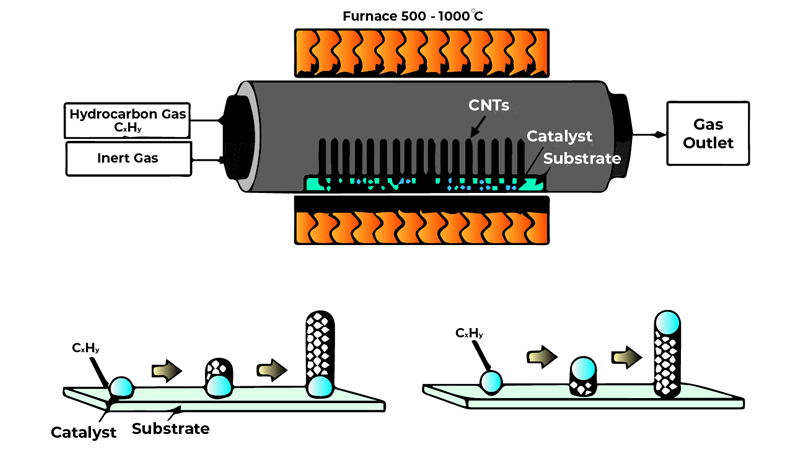
- 1. The chemical vapor deposition method begins by placing a thin slice of diamond seed in a sealed container. The diamond seed measures around 300 microns and 10x10mm. The chamber is filled with carbon rich gases, such as methane.
- 2. The sealed chamber with diamond seed is heated to over 1400-degree Fahrenheit and then gas turns into plasma.
- 3. The gas reacts by breaking down. This causes the release of pure carbon pieces. These pieces begin to stick to the seed and form a new diamond.
- 4. A square cube of rough lab grown diamond formed. Which requires additional treatment to enhance or change the diamond color and sizes.
- 5. A diamond grown in a laboratory using Chemical Vapor Deposition will still pass the diamond test. CVD-grown lab diamonds are chemically, physically and optically identical to natural diamonds.
2. The Process of making High Pressure High Temperature - HPHT:
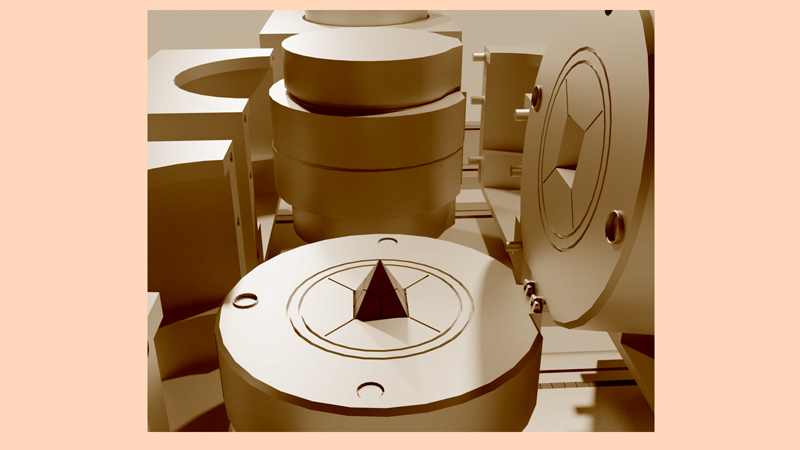
- 6. The high-pressure high temperature method begins by placing a graphite in a large machine with a solvent metal.
- 7. The diamond is placed and pressed. This is done with a molten flux of metals. This is to create the same pressure a diamond faces under the Earth's surface.
- 8. Where it is crushed and extremely pressurized, additionally heated to a high temperature over 1600 Fahrenheit.
- 9. This pressure and heat cause the carbon to crystallize and then the formed diamond is carefully cooled.
- 10. The rough diamond is cut with laser precision depending on the desired size and quality of the stones.
- 11. Diamonds grown in a laboratory using the HPHT method are tested as real diamonds on a diamond tester. Diamonds grown in a laboratory using the HPHT method are chemically, physically, and optically identical to natural diamonds.
How Long Does It Take to Grow a Lab Grown Diamond?
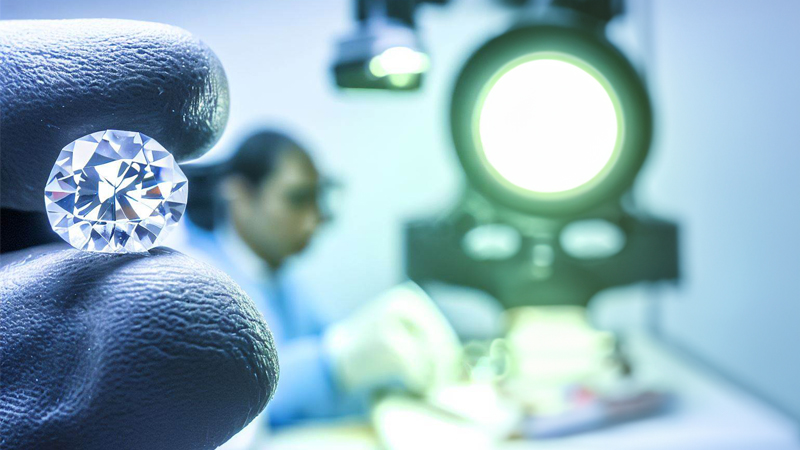
The time it takes to grow a lab grown diamond depends on several factors like shapes and sizes of diamond. Mined diamonds typically take billions of years to form. In comparison, lab grown diamonds form in a much shorter time frame.
It usually takes between 2 - 4 weeks to grow a 1 carat diamond. On the other hand, gemstones like blue and yellow stone take 5-10 days. Both methods, CVD and HPHT are used to grow diamonds in a laboratory take far less time than naturally grown diamonds.
Benefits of Choosing Lab Grown Diamonds Over Natural Diamond
Affordable:
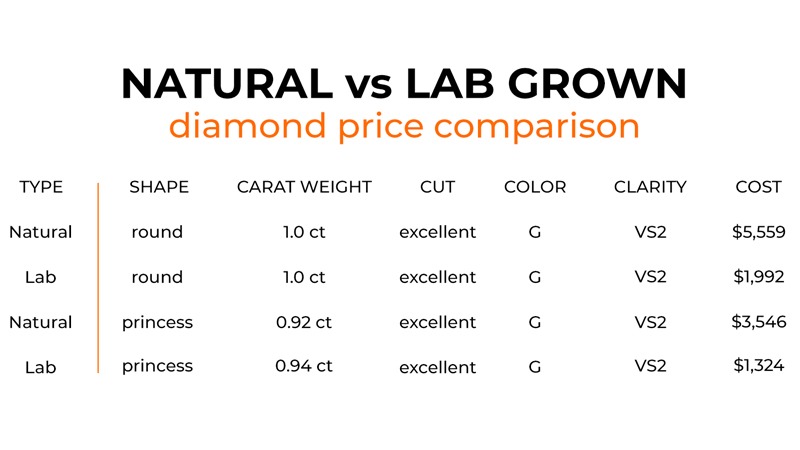
Lab grown diamonds are much more affordable than natural diamonds. They are typically 60-70% less expensive. This is the biggest reason to choose them.
Natural diamonds are expensive due to their long process of mining and supply chain. You will be able to get a larger stone and higher quality for your budget with lab grown diamonds.
Lab-grown diamonds are manufactured in a laboratory, skipping the mining process. This does not mean, however, that the process is any less difficult than that of a mined diamond. They come into contact with fewer hands along the way, resulting in a less expensive diamond.
It is important to understand the difference between lab grown diamonds and diamond simulants such as cubic zirconia and moissanite. These imitations are not made of carbon crystals and do not have the same radiance as diamonds.
As a result, simulants are substantially cheaper than lab created diamonds. Decide to buy a lab-grown diamond ring or other jewelry.
You will get the same result for 40-60% less cost. Get the same radiance, clarity, and excellent quality as a natural diamond. There's no need to stretch your budget when you can get the exact same jewel for nearly half the price!
Eco-Friendly:

Lab manufactured diamonds are more sustainable and eco-friendly than natural diamonds. They are grown in a controlled laboratory, so the environment is not harmed. And natural diamonds consume energy, large amounts of water and hazardous substances.
However, there are sustainability issues with lab-grown diamonds as well. The HPHT method to manufacture lab diamond requires huge amounts of energy. The CVD method also uses the same amount of energy to power a home for a month.
Natural or lab they both look the same.
Quality:

High quality Lab grown diamonds don't have impurities as is it formed in a controlled environment. Typically, you will get purity in lab grown diamond rather than natural diamonds as it has impurities within them. Every laboratory grown diamond is graded according to the 4Cs of Diamond cut, color, clarity, and carat weight.
Conclusion:

Lab-grown diamonds are made in a laboratory using advanced technology. This replicates the natural process of creating mined diamonds. Lab grown diamonds are identical to earth mined diamond they have the same chemical, physical and optical properties as mined diamond.
The process of creating a diamond in a laboratory is more efficient.
The diamond jewelry or diamond engagement ring made in the laboratory look the same as natural diamonds. It is impossible to tell the difference between lab grown diamond and mined diamond, they are identical in every way. Lab grown diamond comes with grading report like naturally mined diamonds.
HPHT and CVD diamonds have the same chemical and optical properties as natural diamonds. This makes them easy to test as real diamonds using a diamond tester. The only difference between lab grown diamond and natural diamond is their origin.

